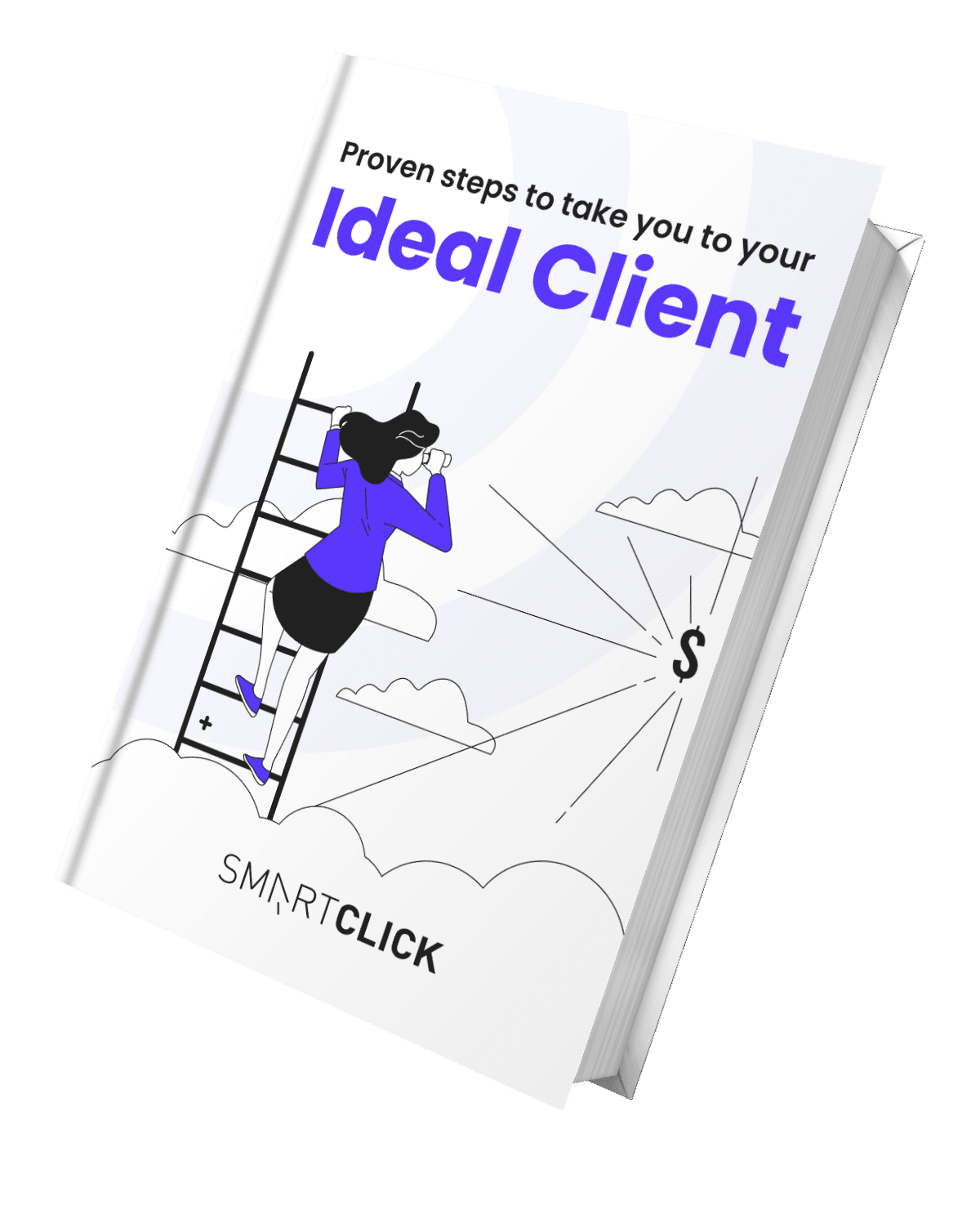Why is your business losing money? Can you find the reasons why you try so hard but it doesn’t give any results? Maybe one of the reasons is that you don’t have an Ideal Client Profile for your business.
Defining the Ideal Client Profile means including all characteristics that are valuable for your business. That may include demographic information, psychographic information, and of course, their pain points, business challenges, stress, frustrations, and things that make them nervous. You always have to define the age, gender, and location first and then add other characteristics such as average income, general interests, generational values, beliefs, etc.
Keep in mind that as your business grows and expands, you may have to redefine the ICP by adding and removing some specifications. However, this won’t be an issue to define business profile since once you have the base, it would be easier to do that every time you’ll have to adjust your strategy.
Table of Contents
- Ideal Client vs Buyer Persona
- Ideal Client Profile: B2C and B2B
- Looking at Your Current Customer Base
- What Happens if You Don’t Have an Ideal Client Defined?
- How to Define an Ideal Client Before You Establish a SEO Strategy?
- How to Define the Ideal Client Profile if you are new on the Market? (small agency, startup, etc.)
- What Ideal Clients from the Same Niche Have in Common?
- Conclusion
- FAQs
Ideal Client vs Buyer Persona
Regarding what is Ideal Client Profile, An ideal customer profile is a detailed description of the type of organization, business, or company that would benefit the most from your services or products and provide the most value for your business. Therefore, the focus is on the characteristics as a whole rather than on individual buyers.
A Buyer Persona is more focused on the ideal individual buyer and the characteristics of the individuals who make buying decisions.
The key differences between ICP and Buyer Persona include:
- Focus: ICP focuses on the ideal organization as a whole, while Buyer Persona focuses on the ideal individual buyer within the organization.
- Application: ICP is for identifying and qualifying businesses that best fit your services and products, while Buyer Persona is used to craft targeting sales approaches and marketing strategies that resonate with individuals included in the purchasing decision.
- Elements: ICP includes company-specific characteristics, while Buyer Persona includes individual-specific characteristics.
Therefore, it’s better to first define the ICP and then the Buyer Persona.

Ideal Client Profile: B2C and B2B
Defining the ideal customer or client profile has general aspects that have to be addressed. However, there is a difference between defining it for a B2C vs B2B.
For instance, regarding B2C you will have to focus more on age, location, income, and even marital status in order to discover the profile, while regarding B2B you will need to focus more on the industry, budget, size of the business, and so on.
Looking at Your Current Customer Base
What can you conclude when looking at your current customer base? Do you see any pattern or trend? What can you say about your current customers that may be valuable for the next ones?
Can you group them into different segments according to some specific characteristic? For example, what can you conclude after you group them by age, niche, location, or custom business needs?
These answers will help you gather all the needed information about your previous and current customers, helping you start creating your ideal client.
According to these patterns, you can:
Create a Buyer Persona
Using the groups you’ve created, you can come up with an ideal buyer persona. Initially, you can create a few ideal buyers and then conduct a series of questions like:
- How did they find my business?
- Why are they interested in my services?
- How can my business help them?
- What are the issues they are facing?
- Do they need one-time or long-term solutions?
- What are their expectations from this collaboration?
These answers will help you determine the essential segments for your business, so you can create the ICP and make it easier to define customer profile specifically.
Refine the Result
You’ve gathered a lot of information about your current and previous clients, and probably you’ve seen some patterns that fit your Ideal Client description. So, it’s time to work on carefully defining the profile, using the insights you already have in your business, current market trends, and popular customer demands.
Once you are done, you have to only polish the whole thing once again, review the characteristics, and decide how to use the ICP for your targeted marketing campaigns.
Define the Ideal Client Profile
It seems like you are now ready to combine the existing information and come up with a unified profile that contains all the characteristics your ideal customer has.
If you offer more than one service and there are some overlaps, it can be too early to create one ideal client. So, you can try a segmentation this way:
Client type A – They receive all the services you offer.
Client type B – They get a shorter version of the services for Client A.
Client type C – You work on simplified services to gain trust and then give more value to the collaboration.
It’s also important to note that it’s not a one-time thing. This is a dynamic process, you should review and update your ICP as your business changes or you gather more information about your customers. Your further clients may not completely fit the Ideal Client Profile, but these differences will help you refine the profile even better than before. It is not necessarily a bad thing. On the contrary, expanding your business means accepting clients who aren’t ideally the same as the Ideal Customer.
This profile is only an indication of who’s your ideal client, but you must let it evolve the same way you grow your business. The ideal customer profile mustn’t be your limitation. Use it as a benchmark or focal point, but don’t exclude the characteristics that don’t fit the initial version.
Remember, you shouldn’t limit yourself only to previous and current clients. You have complete freedom to create this ideal profile, no matter if you had clients previously or you just started your business. And initiate communication to create valuable relations with your target clients. You can still research what your competitors offer to their clients and explore the current industry trends. That way, you will successfully come up with the profile of your ideal client but still keep it open for adjustments and improvements.
What Happens if You Don’t Have an Ideal Client Defined?
With an idea of your Ideal Client, you will be able to effectively execute your plans and strategies. You must understand what your target audience wants and expects from businesses like yours. Every marketing activity, like messaging, campaigns, leads generation, and sales, will be difficult to work out if you don’t know who you are talking to. All these things will eventually lead to wasted marketing money (and efforts), which badly affects your business and self-confidence for sure.
Without a clear understanding of who your target audience is, it can be difficult to anticipate their needs and tailor your products or services to meet those needs. Simply, you don’t know anything about your ideal customers, and you can’t attract them anyhow. With a clear understanding of who your target audience is, it can be easier to track conversions and determine the ROI (return on investment) of your marketing campaigns.
Let’s summarize all these things in a simple list. Without a defined Ideal Client Profile:
- You may receive enough visits, but they won’t convert into buyers
- You’ll lose time recreating and reimagining your current strategy
- Losing time is also losing money
- Your business will decline to the point of no return
- You will work hard but with no results, which is very discouraging
- You may have to close your business at the end
Not having a defined ideal client can limit your business’s potential for growth and success. You have to take this task very seriously, so you can run effective marketing, resulting in sales and better service to your customers.
The benefits of defining the ICP are everything opposite of the aspects above, meaning:
- You will receive visits that will convert into buyers
- Won’t have to lose time on new strategies continuously
- You won’t lose time and money since you’ll be headed in the proper direction
- Your business will progress and improve over time with more sales
- You won’t have to work as hard and you will have better results
How to Define an Ideal Client Before You Establish a SEO Strategy?
Defining an Ideal Client is important for your SEO strategy. Here are some specific considerations you have to keep in mind.
1. Identify your areas of expertise
Your areas of expertise can directly affect how you implement your SEO strategy, including on-page SEO, off-page SEO, technical audits, website development, content writing, copywriting, local SEO, etc. You can use all these elements or choose the ones relevant to your business. It doesn’t matter as long as you define the service you offer and see how they affect the Ideal Client’s needs.
2. Check on the current database
As we previously said, if you analyze your current and previous clients, you may find interesting patterns to help you define the ICP.
3. Create a Buyer Persona that your SEO targets
A buyer persona is the exact type of client you need to attract. It’s similar to but slightly different from the Ideal Client Profile. You will have to create a few buyer personas until you understand the ideal client’s needs, characteristics, demographics, pain points, and goals. In the end, one buyer persona will be the role model for your ideal client.
The whole process includes many other activities, like assessing the company size, identifying your ideal client’s budget, and using the Ideal Client Profile to create strategies that resonate with your target audience.
4. Summarize the data
After collecting all the data, you can now summarize it and check on what’s relevant for your business. Once you have an outline or even just an idea of the Ideal Client Profile’s basic characteristics, you can fill up the gaps with more details about them.
As a result, you get a concise and clear image of who will ideally hire your business, expecting great collaboration and even more outstanding results. Keep in mind that this is about experienced businesses that already have some client portfolios. Using previous data to create the ideal customer will help you describe this person in detail.
But let’s see what happens when you don’t have previous experience or you still try to land your first client.

How to Define the Ideal Client Profile if you are new on the Market? (small agency, startup, etc.)
If you are already an established business in your niche, you have a great advantage thanks to your current client portfolio.
But what happens if you are a newbie on the market? What if you don’t have some big experience in running your company? Can you really define the Ideal Client Profile, or do you have to wait until you complete some projects?
Luckily, you can create a series of questions you need to answer first, to narrow down the clients’ basic characteristics. In this case, you must come up with images of your ideal client, then fill up the blanks with your answers. These are some of the questions you may ask:
- Who would be my ideal client?
- What issues do they potentially have?
- What are they afraid of?
- What stresses them most?
- Which things hold their business back?
- What do they usually do in their spare time?
And many more.
This process can be pretty time-consuming, even though you don’t have some previous data to analyze. But you still can create an initial version of your Ideal Client Profile and then adjust it as you land your first clients and complete the first project.
As we said, the basics of the Ideal Client Profile are the same, but you are allowed to re-tailor the profile any time you feel like you have to do it.
What Ideal Clients from the Same Niche Have in Common?
When defining the Ideal Client Profile, you have many challenges to overcome. But you also have to understand what the ideal client needs from you, so you can figure out the pattern.
In general, if you compare same niche clients, you’ll see they have a few similar things in common, including:
- They don’t have results, even though they work really hard.
- They have some results, but aren’t satisfied with them.
- They don’t know how to define their marketing goals.
- Their efforts won’t give the projected results.
- They are ready to invest some money to improve their results.
- Their efforts won’t give the projected results.
Not every client is equal. Their needs and requirements depend on their niche and location, and many other factors like experience, expertise, uniqueness, and market competition.
But when you have the Ideal Client Profile, which includes demographic, cultural, and professional characteristics, things become much easier. Your target audience will easily find your business and eventually use some of your services. Additionally, you won’t attract businesses that aren’t a good fit for you.
Conclusion
Ideal Client Profile helps you understand what your target audience wants and needs from a company like yours. Also, you can be even more precise and transparent with your offers and expertise. It doesn’t matter whether you want to use an agency, an SEO expert, or local SEO outsourcing, defining your client is crucial for creating a successful SEO strategy. You can define the Ideal Client Profile effectively, even if you don’t have previous experience.
The path is the same:
- Market research
- Understanding the customer’s pain points
- Identifying the target audience
- Include demographic characteristics
- Define the ideal client’s main goals
- Be aware of your company’s capacity and expertise
- Use the profile to increase sales (i.e., landed projects)
Still, the ideal profile should evolve as you gain more experience. You should review and update the ICP regularly, so you can create even more ideal ideas on who you want to work with and achieve all your business goals.

Download the FREE eBook!
Define your Ideal Client Profile and see how your business grows from that moment on.
FAQs
What to include in the ideal client profile?
An ideal profile should include various characteristics, such as pain points, demographics, psychographics, buying patterns, main goals, business challenges, etc.
What’s the difference between ideal client and buyer persona?
The difference is that an ideal client profile gives a broad overview of the ideal client for the whole business, while a buyer persona profile gives depth by focusing on individual buyers within that broad ideal profile.